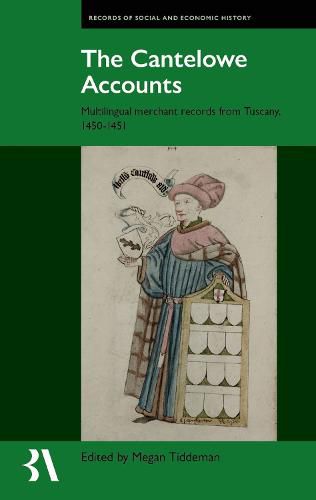Readings Newsletter
Become a Readings Member to make your shopping experience even easier.
Sign in or sign up for free!
You’re not far away from qualifying for FREE standard shipping within Australia
You’ve qualified for FREE standard shipping within Australia
The cart is loading…






The Cantelowe Accounts appear to offer the earliest evidence of an English merchant using Italian as a second language. They were written by John Balmayn, an unknown Londoner, who travelled to Tuscany to oversee the sale of a valuable wool shipment in 1450-51 on behalf of his master - the Mercer, Sir William Cantelowe. The author uses an intriguing mix of four languages, combining Middle English, Latin and Anglo-French with the administrative Tuscan that he has learnt working alongside Florentine partners, such as the Salviati company. Two other striking features of the text are the extensive use of Arabic numerals, unparalleled in fifteenth-century English accounting, and the unusually detailed descriptions of merchant marks that were used to identify the woolsacks. Overall, the accounts are unique amongst multilingual medieval sources and will interest economic historians and historical linguists alike.
$9.00 standard shipping within Australia
FREE standard shipping within Australia for orders over $100.00
Express & International shipping calculated at checkout
The Cantelowe Accounts appear to offer the earliest evidence of an English merchant using Italian as a second language. They were written by John Balmayn, an unknown Londoner, who travelled to Tuscany to oversee the sale of a valuable wool shipment in 1450-51 on behalf of his master - the Mercer, Sir William Cantelowe. The author uses an intriguing mix of four languages, combining Middle English, Latin and Anglo-French with the administrative Tuscan that he has learnt working alongside Florentine partners, such as the Salviati company. Two other striking features of the text are the extensive use of Arabic numerals, unparalleled in fifteenth-century English accounting, and the unusually detailed descriptions of merchant marks that were used to identify the woolsacks. Overall, the accounts are unique amongst multilingual medieval sources and will interest economic historians and historical linguists alike.